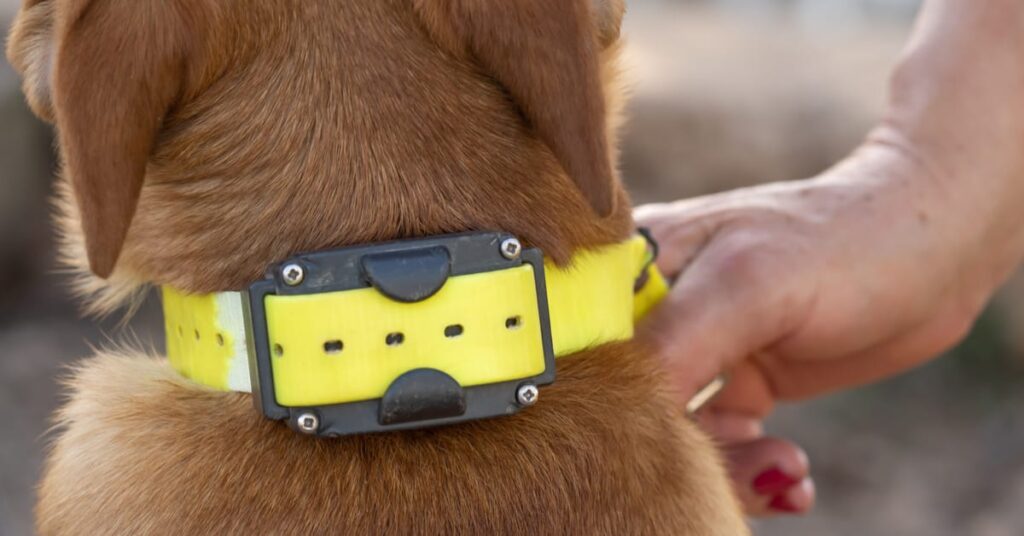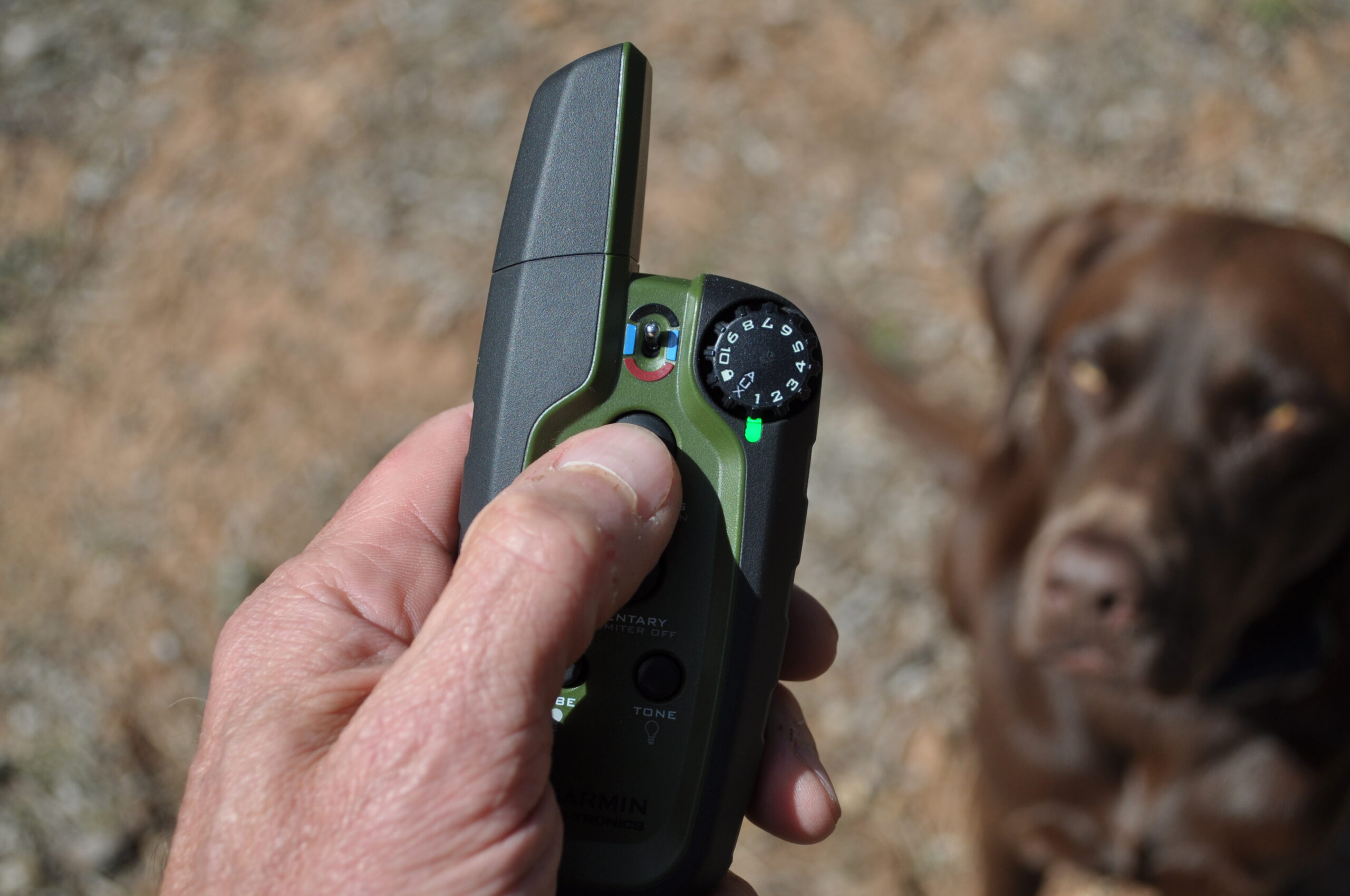If you’re wondering whether or not you should use an electronic collar to train your beloved dog, you’re not alone. It’s a topic that has sparked much debate and divided opinions among dog owners. On one side, proponents argue that electronic collars can be an effective tool for teaching dogs obedience and correcting unwanted behaviors. On the other side, critics claim that these collars can cause unnecessary harm and stress to dogs. With these contrasting perspectives in mind, it’s important to carefully consider the information and make an informed decision that aligns with your dog’s well-being and training needs.

This image is property of s3.amazonaws.com.
What is an electronic collar?
An electronic collar, also known as an e-collar, is a device that is used in dog training. It is designed to remotely deliver various forms of stimulation such as static, vibration, or ultrasound to the dog, in order to modify their behavior and improve their obedience. It consists of a collar that is worn around the dog’s neck and a handheld remote control that allows the trainer to administer the stimulation.
Definition
An electronic collar is a training tool that utilizes electronic stimulation to correct unwanted behaviors in dogs. It is a remote-controlled device with a collar that is worn around the dog’s neck. The collar delivers different types of stimulation, such as static shocks, vibrations, or ultrasonic sounds, depending on the model. The trainer can control the intensity and duration of the stimulation using the handheld remote control.
How it works
The electronic collar works by delivering a stimulation to the dog when they exhibit unwanted behavior. This stimulation acts as a form of punishment, which discourages the dog from repeating the behavior. The collar is equipped with sensors that detect the dog’s movements or barking, and upon detection, the trainer can use the remote control to send a signal that triggers the stimulation. This helps the dog associate the unwanted behavior with the unpleasant stimulation and learn to avoid it.
Pros of using an electronic collar
Using an electronic collar can have several advantages when it comes to dog training. Here are some of the positive aspects of using this tool:
Effective training tool
Electronic collars can be highly effective in correcting unwanted behaviors in dogs. The stimulation delivered by the collar provides an immediate consequence for the dog’s actions, helping them understand which behaviors are undesirable. This can accelerate the learning process and facilitate the training of obedience commands.
Allows for remote training
One of the key benefits of electronic collars is that they allow for remote training. With the handheld remote control, trainers can deliver the stimulation from a distance, which means they can correct the dog’s behavior even when they are not physically close to them. This makes it convenient for training situations where the dog needs to be off-leash or when the trainer needs to address behaviors at a distance.
Can be used for various training purposes
Electronic collars are versatile tools that can be used for a wide range of training purposes. They can be effective in obedience training, as well as for addressing specific behavior problems such as excessive barking, digging, or jumping. The ability to customize the intensity and type of stimulation allows trainers to tailor the training program to the specific needs of the dog.
Cons of using an electronic collar
While electronic collars can be effective training tools, they also come with some potential drawbacks. It is important to consider these cons before deciding to use an electronic collar for your dog:
Can cause physical and emotional harm
One of the main concerns with electronic collars is that they have the potential to cause physical and emotional harm to dogs. The use of static shocks, vibrations, or ultrasound may cause discomfort, stress, or fear in the dog, especially if used at high intensity levels or inappropriately. This raises ethical considerations regarding the welfare of the dog during training.
May lead to dependence on the collar
Another downside of electronic collars is that dogs may become dependent on the collar to exhibit desirable behavior. If the dog only behaves well when wearing the collar and receiving the stimulation, they may not learn to behave properly without it. This can create a reliance on the collar and may hinder the dog’s ability to generalize good behavior in different contexts.
Requires proper training and knowledge
Using an electronic collar effectively requires proper training and knowledge on the part of the trainer. It is essential to understand how to appropriately use the collar and deliver the right level of stimulation for the dog’s temperament and behavior. Without proper training, there is a risk of using the collar incorrectly, which can lead to negative consequences and potential harm to the dog.
Understanding the different types of electronic collars
Electronic collars come in various types, each utilizing different forms of stimulation. It is important to understand the differences between these types in order to choose the most suitable one for your dog’s training needs. Here are the three common types of electronic collars:
Static/ shock collars
Static or shock collars deliver a mild electric stimulation to the dog when triggered by the remote control. The intensity of the shock can usually be adjusted to match the dog’s sensitivity level. This type of collar is often used for training purposes where immediate and strong correction is required.
Vibration collars
Vibration collars, as the name suggests, deliver a vibration sensation to the dog when activated by the trainer. The vibration is typically mild and serves as a form of tactile feedback. This type of collar is commonly used for training dogs with hearing impairments or for situations where a more subtle form of stimulation is desired.
Ultrasonic collars
Ultrasonic collars produce high-frequency sounds that are inaudible to humans but can be heard by dogs. When the collar detects a behavior that needs correction, it emits a loud ultrasonic sound to distract or deter the dog. This type of collar is often used for training dogs who are sensitive to other forms of stimulation or for addressing specific behavioral issues such as excessive barking.
This image is property of images.squarespace-cdn.com.
Factors to consider before using an electronic collar
Before deciding to use an electronic collar for training your dog, there are several important factors to consider. These factors will help determine whether an electronic collar is suitable for your dog’s temperament, training goals, and overall well-being. Here are some key factors to keep in mind:
Dog’s temperament and behavior
It is crucial to assess your dog’s temperament and behavior before using an electronic collar. Some dogs may be more sensitive or fearful, and the use of a collar may cause undue stress or anxiety. Consider your dog’s personality and their tolerance for different types of stimulation to ensure that the collar will not have a negative impact on their mental well-being.
Training goals
Clearly defining your training goals is essential when deciding whether to use an electronic collar. Determine what specific behaviors you want to address, such as leash pulling or excessive barking, and assess whether an electronic collar is the most appropriate tool for achieving those goals. In some cases, alternative training techniques may be more effective and suitable.
Professional advice
Seeking professional advice from a qualified dog trainer or animal behaviorist is highly recommended before using an electronic collar. They can assess your dog’s individual needs and provide guidance on whether an electronic collar is appropriate for your specific training goals and the well-being of your dog. A professional can also provide instruction on proper collar use and training techniques to ensure the safety and effectiveness of the training.
Alternatives to electronic collars
While electronic collars can be effective training tools for some dogs, there are alternative methods that rely on positive reinforcement and a more holistic approach to training. These methods can be equally effective and promote a healthy and positive relationship between you and your dog. Here are some alternative training techniques:
Positive reinforcement training
Positive reinforcement training focuses on rewarding desired behaviors rather than punishing unwanted behaviors. This method uses treats, praise, or play as motivators to encourage the dog to repeat good behaviors. By associating positive experiences with desired actions, the dog learns to make positive choices and willingly comply with commands.
Clicker training
Clicker training is a form of positive reinforcement training that utilizes a small handheld device called a clicker. The clicker is used to mark the desired behavior at the exact moment it occurs, followed by a reward. This technique helps to create clear communication between the trainer and the dog, making the training process more efficient and enjoyable for both.
Target training
Target training involves teaching the dog to touch or follow a target, such as a stick or a target mat. By gradually shaping the behavior and rewarding the dog for successful interactions with the target, this method can be used to teach a wide range of behaviors, from basic obedience commands to more complex tricks. Target training relies on positive reinforcement and creates a fun and engaging learning experience for the dog.

This image is property of images.squarespace-cdn.com.
How to properly use an electronic collar
If you decide to use an electronic collar as part of your dog’s training, it is crucial to use it in a responsible and humane manner. Here are some guidelines on how to properly use an electronic collar:
Choose the right size and fit
Ensure that the electronic collar you choose is the appropriate size and fit for your dog. It should be snug but not excessively tight, allowing for comfortable movement. Improper sizing can cause discomfort or even injury to the dog.
Introduce collar gradually
Before using the collar for training purposes, introduce it to your dog gradually. Allow them to become familiar with the collar by wearing it for short periods of time in a positive and controlled environment. This will help your dog associate the collar with positive experiences rather than just the stimulation.
Use proper training techniques
Do not solely rely on the electronic collar for training. Incorporate positive reinforcement techniques and clear verbal cues to teach and reinforce desired behaviors. Remember, the collar is a tool to aid in training, not a substitute for proper training techniques.
Training techniques for electronic collars
When using an electronic collar, it is important to apply proper training techniques to ensure the safety and effectiveness of the training. Here are some key techniques to follow:
Pairing collar with commands
To effectively use the electronic collar, it is important to pair it with clear verbal commands. Use consistent and specific commands for different behaviors or actions and ensure that the dog understands the association between the command and the collar stimulation.
Using appropriate stimulation level
Adjust the intensity level of the collar stimulation to match your dog’s sensitivity. Start at the lowest level and gradually increase if necessary. Avoid using high levels of stimulation, as it can be overwhelming and potentially harmful to the dog.
Rewarding desired behavior
Always reward your dog for displaying the desired behavior, whether they respond to the collar stimulation or not. Positive reinforcement helps motivate the dog and reinforces good behavior. Use treats, praise, or play to create a positive association with the training process.

This image is property of worldanimalfoundation.org.
Potential risks and precautions of using electronic collars
While electronic collars can be effective training tools when used correctly, it is important to be aware of their potential risks and take necessary precautions. Here are some potential risks associated with electronic collar use:
Potential physical harm
Using electronic collars at high intensity levels or inappropriately can cause physical harm to dogs. It is crucial to always follow the manufacturer’s instructions and use the collar responsibly to prevent unnecessary discomfort, pain, or injury.
Negative impact on the dog-owner relationship
Improper use of the electronic collar, such as using it as a punishment device rather than a training aid, can have a negative impact on the dog-owner relationship. It may lead to fear, distrust, or aggression in the dog, as they associate the collar with aversive experiences. It is important to build trust and maintain a positive bond with your dog throughout the training process.
Seeking professional guidance
If you are unsure about how to properly use an electronic collar or if you are experiencing challenges during the training process, it is recommended to seek professional guidance from a qualified dog trainer or animal behaviorist. They can provide personalized advice, address any concerns, and ensure that you are using the collar in a safe and effective manner.
Conclusion
Using an electronic collar can be an effective tool for training and modifying dog behavior, but it should be approached with caution and responsibility. It is important to weigh the pros and cons, consider your dog’s individual needs and temperament, and seek professional advice before deciding to use an electronic collar. Alternatives to electronic collars, such as positive reinforcement training, clicker training, and target training, offer effective and humane approaches to training. Remember to always prioritize the well-being and safety of your dog, and ensure that any training methods used are grounded in positive reinforcement and respect.

This image is property of outwardhound.com.




